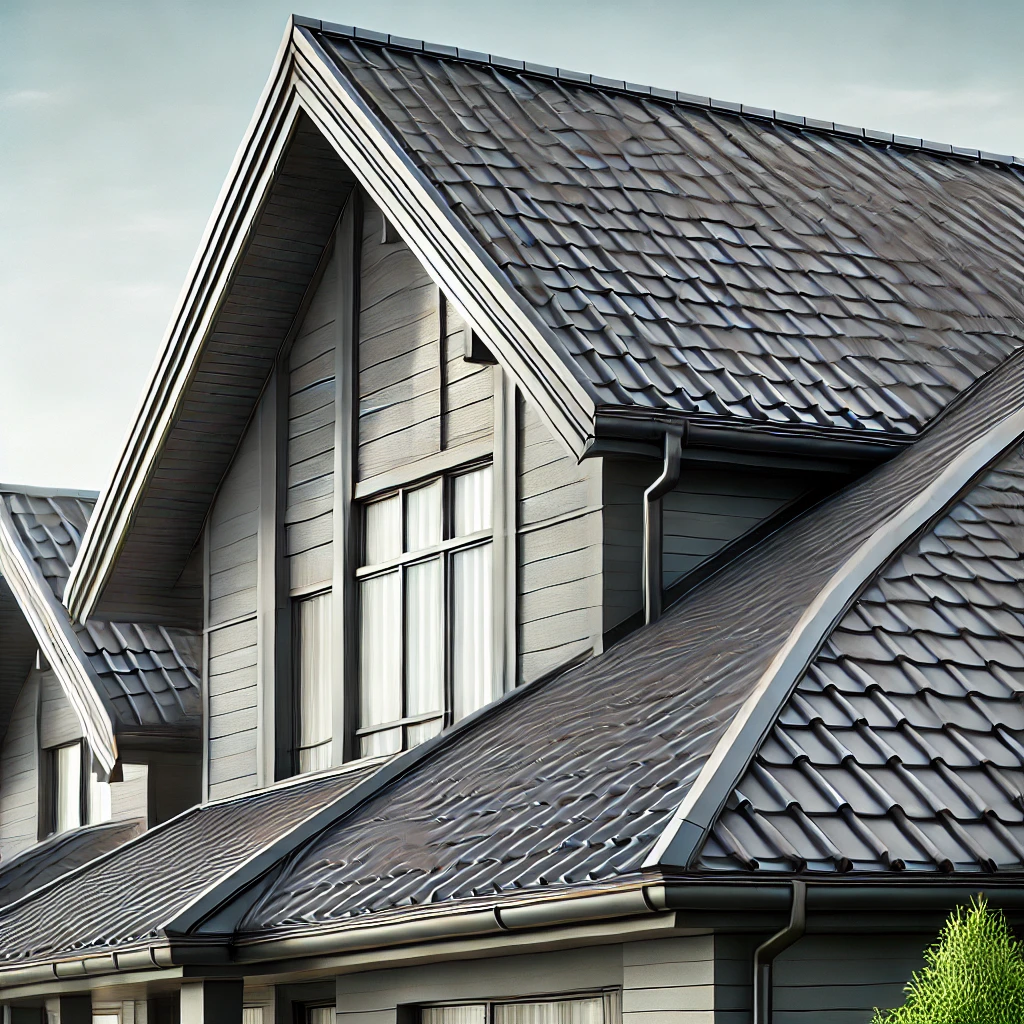When it comes to building or renovating a home, the choice of roofing material is one of the most critical decisions you’ll make. A roof is more than just the finishing touch on your home; it’s your first line of defense against the elements and a significant factor in your home’s overall durability, energy efficiency, and aesthetic appeal. One of the most common questions homeowners ask is, “Which roofing material lasts the longest?” This article will explore the longevity of various roofing materials, helping you make an informed decision for your next project.
1. Slate Roofing
Longevity: 75-200 years
Slate is often regarded as the gold standard in roofing materials when it comes to longevity. Derived from natural stone, slate roofs can last anywhere from 75 to over 200 years if properly maintained. Its incredible lifespan is due to the material’s resistance to weathering, fire, and insects. Additionally, slate’s natural beauty and variety of colors make it an attractive option for many homeowners.
Pros:
- Extremely durable and long-lasting
- Fire-resistant
- Low maintenance
- Aesthetic appeal with natural stone look
Cons:
- Very heavy, requiring reinforced roof structures
- Expensive to install and repair
- Installation requires specialized skills
2. Metal Roofing
Longevity: 40-70 years
Metal roofing, including options like steel, aluminum, copper, and zinc, is another excellent choice for durability. Metal roofs can last between 40 to 70 years, depending on the material and the quality of installation. Copper and zinc are the most durable, often lasting over 100 years. Metal roofing is resistant to fire, wind, and hail, making it ideal for areas prone to extreme weather conditions.
Pros:
- Lightweight and easy to install
- Highly durable and long-lasting
- Energy-efficient, reflecting solar heat
- Recyclable and environmentally friendly
Cons:
- Can be noisy during rain or hailstorms
- May dent or scratch easily
- Higher upfront cost compared to asphalt shingles
3. Clay and Concrete Tiles
Longevity: 50-100 years
Clay and concrete tiles are popular in regions with a warm climate, offering excellent durability and a lifespan ranging from 50 to 100 years. These tiles are highly resistant to fire, rot, and insects, and they can withstand harsh weather conditions. Clay tiles, in particular, have been used for centuries in Mediterranean and Spanish-style architecture.
Pros:
- Long-lasting and durable
- Fire-resistant
- Environmentally friendly, made from natural materials
- Aesthetic appeal with various styles and colors
Cons:
- Very heavy, requiring strong structural support
- Brittle and prone to cracking under impact
- Expensive to install and repair
4. Asphalt Shingles
Longevity: 15-30 years
Asphalt shingles are the most common roofing material in North America due to their affordability and ease of installation. While they don’t last as long as other materials, they offer a decent lifespan of 15 to 30 years with proper maintenance. Architectural shingles, a higher-end option, can last slightly longer, up to 30 years.
Pros:
- Affordable and widely available
- Easy to install and repair
- Available in various styles and colors
Cons:
- Shorter lifespan compared to other materials
- Prone to damage from severe weather
- Less environmentally friendly, with limited recyclability
5. Wood Shingles and Shakes
Longevity: 30-50 years
Wood shingles and shakes offer a natural, rustic appearance and can last between 30 to 50 years, depending on the type of wood and maintenance level. Cedar is the most popular wood for roofing due to its resistance to decay and insects. However, wood roofs require regular maintenance to prevent issues like mold, rot, and insect infestations.
Pros:
- Natural, attractive appearance
- Renewable resource
- Can last a long time with proper care
Cons:
- High maintenance, requiring regular treatment
- Prone to fire unless treated with a fire retardant
- Vulnerable to mold, rot, and insect damage
6. Synthetic Roofing Materials
Longevity: 50+ years
Synthetic roofing materials, such as rubber, plastic, and polymer composites, are designed to mimic the look of natural materials like slate or wood while offering enhanced durability and lower maintenance. These materials can last over 50 years and are often more affordable and easier to install than their natural counterparts.
Pros:
- Durable and low maintenance
- Lightweight and easy to install
- Often more affordable than natural materials
- Resistant to mold, rot, and insects
Cons:
- Limited history, so long-term performance is still being studied
- May lack the authentic look of natural materials
- Can be less environmentally friendly, depending on the material


